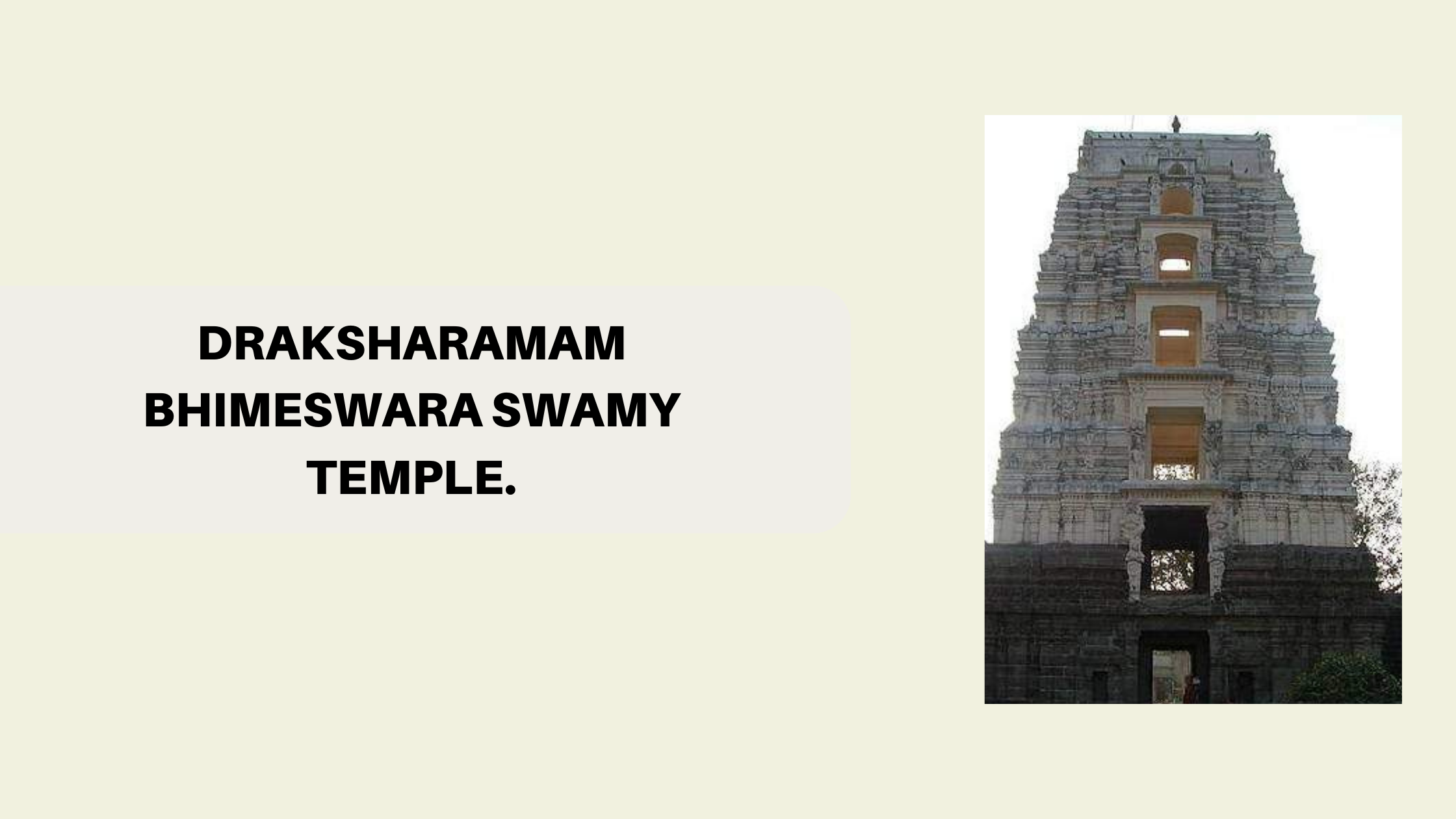Draksharamam Bhimeswara Swamy Temple: Nestled on the eastern banks of the Godavari River in the town of Draksharamam, the Bhimeshwara Swamy Temple, also known as Dakshina Kashi Kshetram, stands as proof of the rich Hindu heritage of Andhra Pradesh. Dedicated to Lord Shiva as Bhimeshwara Swamy and Goddess Parvati as Sri Manikyamba Devi, this ancient temple carries deep religious significance. In this article, we will talk about the history, religious importance, architectural marvels, and practices of the Bhimeshwara Swamy Temple, presenting a comprehensive guide to this holy pilgrimage site.
Also Read:
Historical Background
The roots of the Bhimeshwara Swamy Temple stretch back to the 13th century, with notes dating as far back as the 9th and 10th centuries during the rule of the Chalukya king Bhima. The historical backdrop demonstrates a region embroiled in conflicts between the Chalukya and Rashtrakota dynasties, with reminders shedding light on the following rule by the Chola and Kalinga dynasties. The temple stands as a silent witness to the ebb and flow of dynastic struggles, each leaving an indelible mark on its storied walls.
Architectural Marvel
The Draksharamam Temple showcases the splendor of South Indian architecture, corresponding to a fortress with its two-storeyed structure. Complex details within the inner sanctum, or garbhaalaya, reflect the craftsmanship of its era. The temple features two prakarams, with the outer one boasting four entrances, each devoted to a form of the goddess—Gogulamma, Nookambika, Moodhambika, and Ghatambhike. Notably, the looted diamonds of Aurangzeb once adorned the temple walls, illuminating the sanctum. The modern architects have seamlessly combined ventilation and illumination, creating a spiritual sanctuary for devotees.
Religious Significance
As the second Pancharama Kshetra, the Draksharamam Temple holds paramount importance for Shaivites in Hindu philosophy. The temple reveres Lord Shiva as Bhimeshwara Swamy, described as a Spatika Linga, the world’s tallest lingam made of crystal. Black stripes on the upper part symbolize the tiger skin worn by Lord Shiva during the discovery of Arjuna under the guise of a hunter.
The temple equally venerates Goddess Manikyamba Devi as Vamachara Devatha, highlighting gender equality in worship. Sapta Godavari Kundam, a sacred pond within the temple premises, adds to its religious importance, with the holy water used for different rituals.
Rituals and Festivals
The Draksharamam Temple observes a schedule of daily rituals, including Ekadasa Rudrabhishekam, Laghunyasam, Astottara Kumkumarchana, Mahanyasapurvaka Abhishekam, and Sahasra Kumkumarchana. Devotees participate in these rituals to seek blessings and divine grace.
Several festivals grace the temple throughout the year, with Maha Shivaratri being the grandest celebration. The marriage festival, Sri Swamy Vari Kalyanam, and the Shasti Festival are observed with fervor. Sri Swamyvari Birthday in December, Sarrannavarathri Festival in October, and the Kartheeka Monday Festivals with Jwalathoranam in November further improve the spiritual vibrancy of the temple.
At The End
The Bhimeshwara Swamy Temple in Draksharamam stands as a spiritual oasis, weaving together history, architecture, and spiritual fervor. Devotees and history lovers alike find solace and inspiration within its hallowed walls. As a revered Pancharama Kshetra and one of the 18 Ashta Dasa Peethas, this temple persists to be a symbol of unwavering devotion, attracting pilgrims seeking divine blessings and a connection to the rich tapestry of Hindu heritage.

